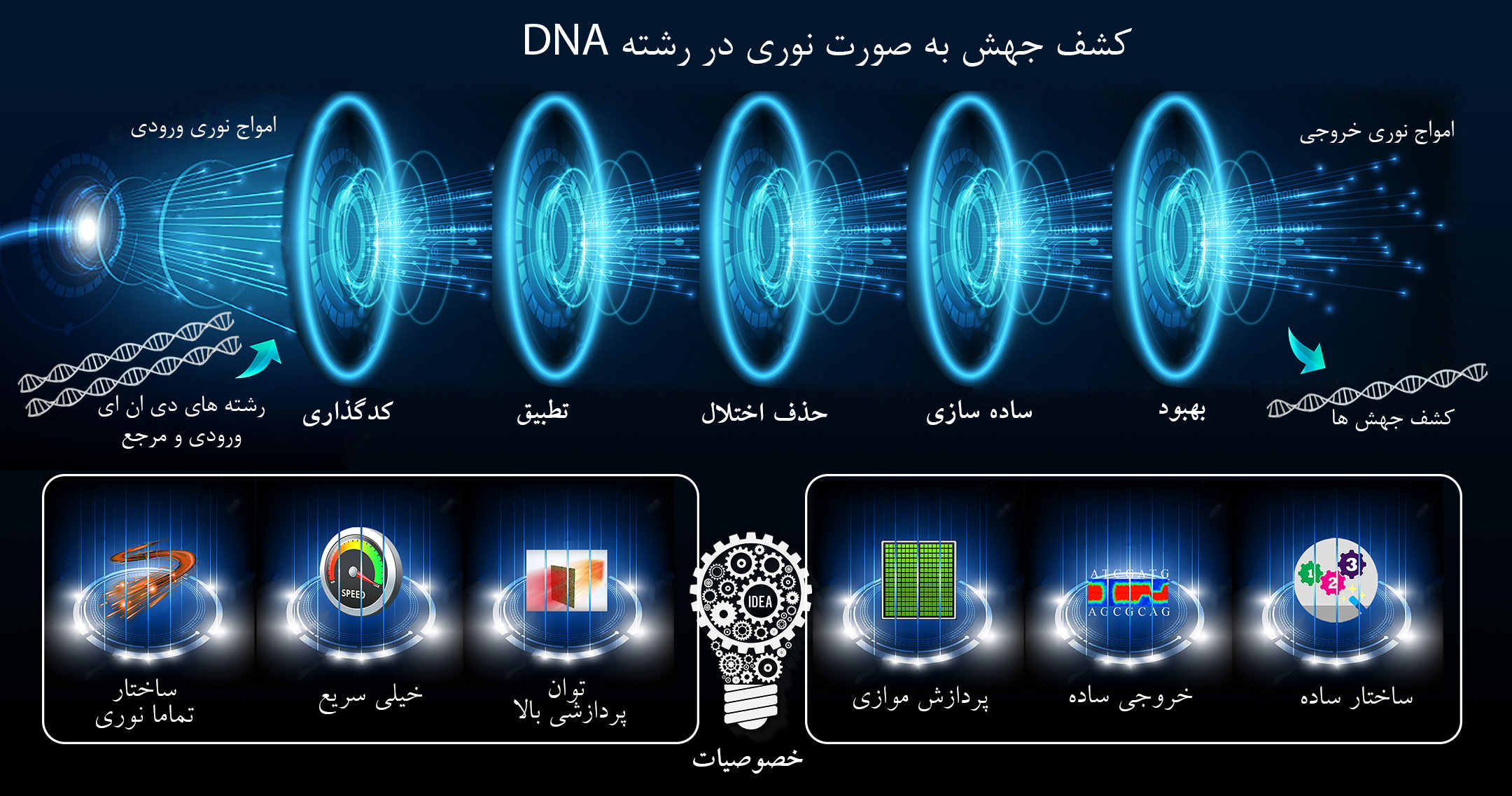Two faculty members of Sharif University of Technology, in cooperation with the researchers of this university, succeeded in patenting their patent titled "detection of mutations optically in a DNA strand" in the United States Patent and Trademark Office "USPTO" as the most reliable patent system in the world.
According to the public relations report of Sharif University of Technology, Dr. Samieh Kohi, Associate Dean of the Faculty of Computer Engineering and Dr. Zahra Kavesh, Associate Dean of the Faculty of Electrical Engineering, with the cooperation of Ehsan Maleki, a master's student at the Faculty of Computer Engineering, and Hossein Babashah, a master's student at the Faculty of Electrical Engineering, after 4 years Efforts and research succeeded in registering their invention in the USPTO. The achievements of this invention for the country include reducing the time to diagnose genetic diseases such as physical abnormalities and mental disabilities, cancer, allergies, and nervous system diseases (such as MS and Parkinson's), reducing patients' costs for genetic tests, reducing the time and financial cost of research and development in The field of science and genetic engineering will help to upgrade the research and medical centers of the country to become a pole.
Regarding the importance and necessity of this research, Dr. Kohi said: In biology, DNA strands contain specific instructions for the reproduction and production of proteins that determine the function and biological development of all living organisms. Each DNA consists of a long string of nucleotides. Unwanted mutations in any DNA may disrupt the instructions of the DNA strand and cause the loss of protein structure or the production of abnormal proteins, which, for example, causes a change in a person's appearance or a person suffering from very serious genetic diseases such as cancer. Therefore, in bioinformatics, detecting and locating mutations in the DNA strand is of great importance for diagnosing genetic diseases and then treating them.
In this regard, the candidate DNA strand is matched with a healthy reference DNA strand to discover the exact location of mutations by determining the similarities and differences between the two strands. Due to the length of DNA strands (more than three billion nucleotides), matching two DNA strands is a very long and complicated task, which has become more complicated with the ever-increasing volume of genomic data and the development of genetics and medical knowledge, and requires paying exorbitant costs. Also, doing this work using electrical processors that have a serial nature faces many challenges, such as the great complexity of processing long strings, a lot of time and power consumption in matching the genome sequence, the need for a powerful processor and a lot of storage memory, etc. Meanwhile, to treat genetic disease, mutations must be discovered and located as soon as possible.
He added: The solution to the above challenge can be found in optical processing as a new technology that is able to process a large amount of data in a short time using data parallelism and high speed of light propagation. Accordingly, in this invention, a new method for matching the DNA sequence using optical processing is provided. The purpose of the presented solution is to achieve a completely optical architecture so that it can accurately determine the location of mutations by using parallelization features and the speed of light waves, in addition to matching the DNA sequence, and presenting it in a simple and understandable format with significant improvements in power consumption and The processing time compared to similar electrical systems.

Dr. Kohi noted; In this invention, we solve many problems in similar electrical methods by passing light waves quickly through optical parts with parallelization capability and very high input data volume. Also, the use of light waves instead of electric waves in data processing has caused a significant reduction in power consumption, eliminating the need for temporary information storage components, etc. The optical matching method presented in this invention consists of five steps, which include coding, matching, interference removal, simplification, and output improvement.In the end, he reminded; In general, the innovations of this invention include providing a completely optical matching method of DNA strands to determine the exact location of mutations, providing a new optical coding, providing a very fast all-optical architecture with high processing power, producing a simple and understandable output. Also, this invention can be used in genetics, biotechnology and agricultural research centers, educational centers such as medical universities, research centers in the field of genetic medicine and genetic diseases, clinics and hospitals, pharmaceutical research companies, companies with DNA matching services, etc. .
It is worth mentioning that the USPTO patent system is the most famous patent system in the world. The very large market, the activity and extensive presence of some of the largest technology companies in this country, the development and commercialization of the latest emerging technologies in ecosystems such as Silicon Valley and... have made a "US" patent a very valuable asset for research centers. university and various American companies and generally around the world.
It should be said; The practical experiments of the design and testing of the invented system have been carried out in the Optical Processing Laboratory (OPL) in the Faculty of Computer Engineering.
